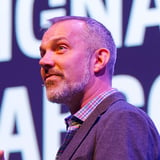Summary
Lots of legacy enterprise product suites are being re-platformed to become updated SaaS offerings and offer richer, responsive, device agnostic experiences. While the benefits of such initiatives are many for the business and their customers, it also comes wrought with many major challenges in strategy, technology, time to market and managing change and disruption for the existing customer base. This talk will present a case study and 10 learnings from a 4-year long re-platforming journey of UKG Ready, a HCM product suite. As we follow the journey, we will also learn from UX strategy and contributions at each stage.
Key Insights
-
•
Legacy enterprise applications often persist due to high risk and complexity despite technology advances.
-
•
Re-platforming on the cloud varies from simple re-hosting to full refactoring and requires tailoring to business goals.
-
•
UX teams need to evolve from embedded roles to centralized, strategic influencers in re-platforming projects.
-
•
Focusing too narrowly on one persona, such as end users, risks neglecting important power users and administrators.
-
•
A blended approach combining visual refreshes and incremental re-platforming can ease transitions but requires careful consistency.
-
•
Designing for change includes not just usability but also product consumability like adoption speed and time to value.
-
•
Robust change management addresses both external customers and internal teams to align rationale and reduce resistance.
-
•
Initial customer resistance to change is natural and may mask genuine pain points, requiring feedback at scale with qualitative and quantitative data.
-
•
Hyper-focus on individual features or modules can cause loss of peripheral vision, leading to fragmented experience and customer frustration.
-
•
Maintaining team morale during long, complex transformations is critical for sustained success and delivering customer value.
Notable Quotes
"Legacy applications linger because changing them is risk-ridden and a major undertaking."
"No two re-platforming journeys are exactly the same, and there isn't one single formula that works every time."
"We did a blended approach with a visual refresh first to minimize differences between old and new and buy time."
"We neglected our power users during the responsive, one-size-fits-all strategy, and it really hurt us."
"Re-platforming is transformative not just for the product but also for the people, teams, and organization."
"There is no solid way to control the course of your re-platforming project; being flexible is essential."
"The curse of hyper-focus means you lose peripheral vision and miss the larger context and customer needs."
"Designing for change means focusing on learnability and product consumability, not just ease of use."
"Managing resistance is mental; customers might resist because they've learned workarounds with legacy systems."
"Keep a pulse on your team morale because re-platforming journeys can either enrich or burn out your people."
Or choose a question:
















More Videos

"Systems thinking requires constant engagement with stakeholders; working in isolation will not lead to successful outcomes."
Sheryl CababaExpanding Your Design Lens with Systems Thinking
February 23, 2023

"Imposter syndrome feels universal here; even senior designers share that every project starts with feeling like you’ve forgotten how to do your job."
Caitlyn Hampton Monica Lee Jina YoonCompass 101: Growing Your Career In A Startup World
June 11, 2021

"Plans are useless, but planning is indispensable. You have to keep moving forwards even if the destination keeps changing."
Silke Bochat5 Antifragile Strategies for a DesignOps 2.0
September 23, 2024

"In enterprise, people often just want to not get fired — that’s a very important need."
Christian RohrerInsight Types That Influence Enterprise Decision Makers
May 13, 2015

"Try to make your component hierarchy as flat as possible because tall, nested structures become hard to navigate."
Jaime CreixemsBest Practices when Creating and Maintaining a Design System
June 7, 2023

"Innovation is not a spice that you sprinkle on and suddenly magical new things come out."
Jeff GothelfInnovation Studios: the Engines of Enterprise Experimentation
May 14, 2015

"Sentient design is about proposing direction without imposing it—laying a road in front of the user, but letting them choose."
Josh Clark Veronika KindredSentient Design: New Design Patterns for New Experiences (3rd of 3 seminars)
February 12, 2025

"Remote research is not a silver bullet."
Sarah RinkRemote User Research: Dos and Don'ts from the Virtual Field
June 11, 2020

"Sometimes the solution perceives the problem in the eyes of users, especially in enterprise spaces."
Alexandra SchmidtEnterprise UX Playbook
December 1, 2022
















